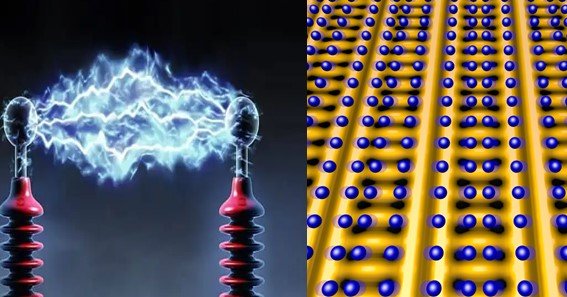Electric charge density is a fundamental concept in electromagnetism that plays a crucial role in understanding how electric charges are distributed in different objects and mediums. Whether in designing electrical devices or analyzing electromagnetic fields, grasping the concept of charge density is essential for various scientific and engineering applications.
What Is Electric Charge Density?
Electric charge density refers to the amount of electric charge per unit length, surface area, or volume of a given object. It essentially measures how densely packed the electric charges are in a specific region.
There are three types of charge densities, each relevant to different contexts:
- Linear Charge Density (λ): This measures the amount of charge per unit length. It is often used for objects like thin wires where the charge is distributed along a line.
- Surface Charge Density (σ): This measures the charge per unit area and is relevant for surfaces like plates or sheets of charged material.
- Volume Charge Density (ρ): This measures the charge per unit volume and applies to three-dimensional objects where the charge is distributed throughout the entire volume.
Why Is Electric Charge Density Important?
Understanding electric charge density is vital for several reasons:
- Electromagnetic Field Analysis: Charge density is a key factor in calculating electric fields and potentials. It helps in determining how the field behaves in different regions and is essential for solving Maxwell’s equations, which govern electromagnetism.
- Design of Electrical Devices: In designing capacitors, sensors, and other electrical components, knowledge of surface and volume charge densities is crucial for optimizing performance and ensuring that the devices function as intended.
- Physics and Engineering: Charge density concepts are fundamental in both theoretical and applied physics. They are used in modeling various physical phenomena, such as the behavior of charged particles in a field, and in the development of technologies like piezoelectric devices and semiconductors.

FAQ
What is the difference between linear, surface, and volume charge density?
Linear charge density refers to charge per unit length, surface charge density to charge per unit area, and volume charge density to charge per unit volume.
How is electric charge density calculated?
Electric charge density is calculated by dividing the total charge by the corresponding length, area, or volume, depending on whether it’s linear, surface, or volume charge density.
Why is electric charge density important in electromagnetism?
It is crucial for determining the distribution of electric fields and potentials, which are essential for understanding and designing electromagnetic systems.
Can charge density vary within a material?
Yes, charge density can vary depending on the distribution of charges. It can be uniform or non-uniform, requiring calculus for precise calculations.
Where is charge density commonly applied?
Charge density is commonly applied in designing capacitors, understanding field distributions, and analyzing the behavior of charged particles in physics and engineering.










